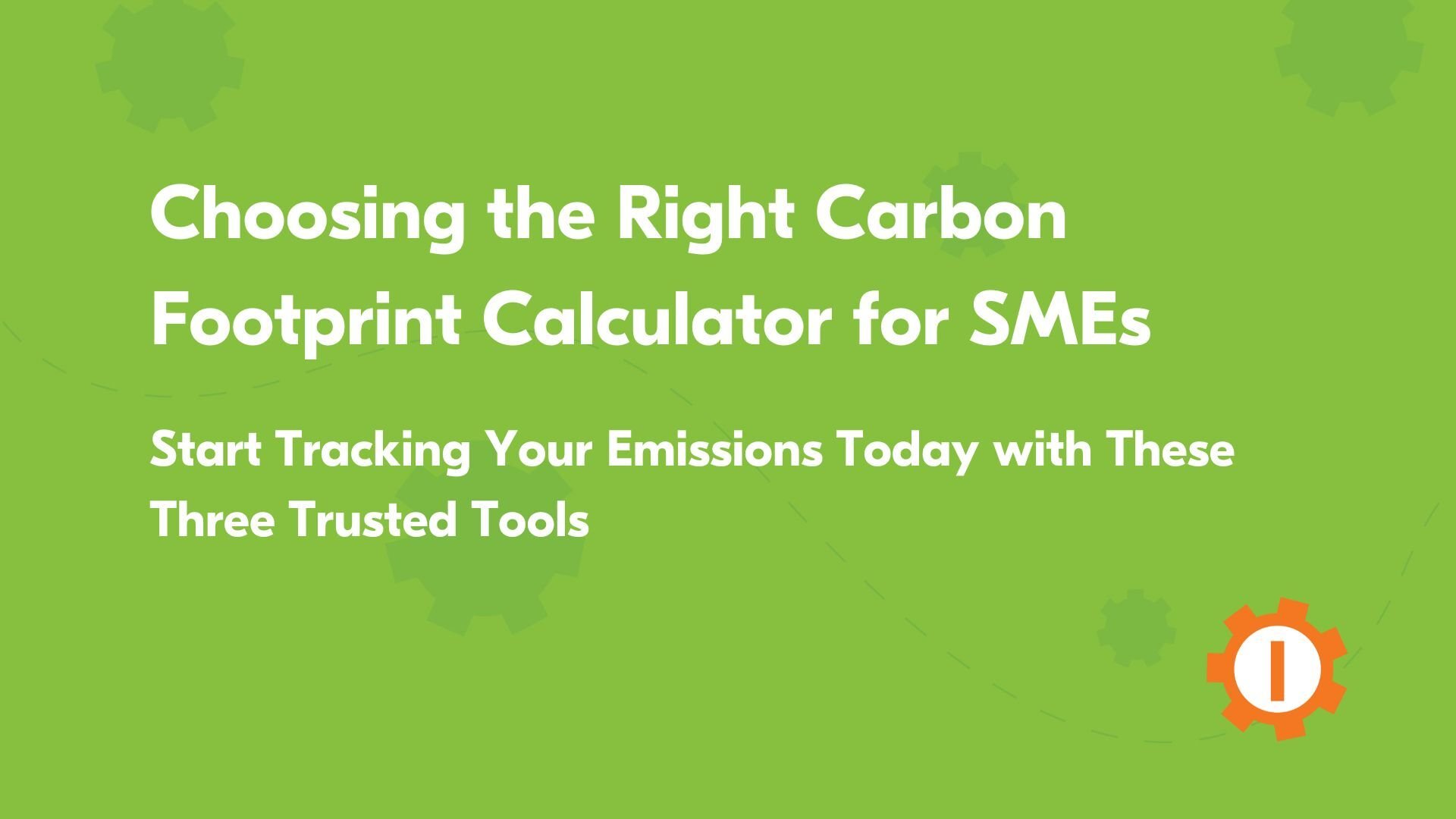Understanding your carbon footprint is one of the most important first steps a business can take in building a credible sustainability strategy. Whether you’re aiming to reduce emissions, meet supply chain demands, or comply with evolving regulations like the Corporate Sustainability Reporting Directive (CSRD), measuring your baseline is essential.
Fortunately, there are several reliable, free-to-use tools available to Irish businesses. Below, we explore three useful carbon footprint calculators tailored to different industries and needs — including their pros, limitations, and how to get started.
1. Climate Toolkit 4 Business – Carbon Calculator
🔗 climatetoolkit4business.gov.ie/carbon-calculator
Best for: SMEs in general business sectors looking to understand and act on carbon emissions across energy, travel, waste, and procurement.
Pros:
Developed by the Irish Government (DECC and LEOs) specifically for Irish SMEs.
User-friendly interface and non-technical language.
Provides tailored action plans based on your inputs.
Covers multiple areas: energy, transport, waste, water, and procurement.
Cons:
Estimates rather than detailed, company-specific emissions.
Limited for businesses with complex supply chains or Scope 3 emissions.
How to Use:
- Go to the calculator link.
- Enter data such as energy bills, travel patterns, and waste volumes.
- Review your estimated emissions and receive customised recommendations for reduction.
2. Construction Industry Federation (CIF) – Carbon Calculator
🔗 cif.ie/esg/cif-carbon-calculator
Best for: Companies operating in the construction, engineering, and built environment sectors.
Pros:
Developed by the CIF with sector-specific benchmarks.
Includes embodied carbon and materials impact relevant to construction projects.
Useful for tracking project-level and company-wide emissions.
Cons:
More technical; may require baseline knowledge of construction emissions.
Not intended for businesses outside the construction ecosystem.
How to Use:
- Register on the CIF ESG portal.
- Input project data, including materials used, transport distances, and site energy.
- Generate carbon reports that can be used in tenders and ESG disclosures.
3. SME Climate Hub – Small Business Carbon Calculator
🔗 smeclimatehub.org/start-measuring
Best for: Small businesses across all sectors, especially those beginning their carbon measurement journey.
Pros:
Free and user-friendly online tool.
Covers Scope 1, 2, and 3 emissions.
Provides actionable insights and resources for emission reduction.
Cons:
May be less detailed for complex operations or larger enterprises.
How to Use:
- Visit the website and select the appropriate calculator based on your business size and complexity.
- Input data related to energy use, transportation, and other relevant activities.
- Review the calculated emissions and explore recommended actions for reduction.
4. CalQRisk – GreenFeet ESG & Carbon Tool
Best for: Irish SMEs looking to integrate carbon measurement into a broader ESG risk and compliance management system.
Pros:
-
Developed in Ireland by ESG and risk experts.
-
Easy, Intuitive System.
-
Allows for integrated tracking of carbon footprint, ESG KPIs, and compliance obligations.
-
Ideal for businesses already using or planning structured ESG reporting frameworks.
-
Full Coverage Across All 3 Scopes.
Cons:
-
Not a free tool — requires a subscription.
-
Does not contain a legislation checker.
How to Use:
-
Look up their case studies for more information on how to use the calculator and the impact on business.
-
Contact CalQRisk via their website to request a demo or consultation.
-
Access the GreenFeet platform and input data across energy, emissions, and ESG metrics.
Final Thought
No matter your sector, tracking your carbon footprint is the gateway to meaningful climate action. Whether you're a food business, manufacturer, or construction firm, there’s a tool tailored to help you get started.
This step aligns with Stage Implementation – Step 3 of the Guaranteed Irish Sustainability Roadmap: Baseline Measurement.
Establishing a clear emissions baseline is essential before setting targets, identifying reduction opportunities, or reporting progress — it’s the foundation for all future action.
Want to know what else your business should be focusing on?
Download the Guaranteed Irish Sustainability Roadmap to explore every step in building a competitive and resilient sustainability strategy.


![[Case Study] Respa Beds Powers Ahead with Solar](https://blog.guaranteedirish.ie/hubfs/LinkedIn%20Article-Pinergy.png)
-1.jpg)